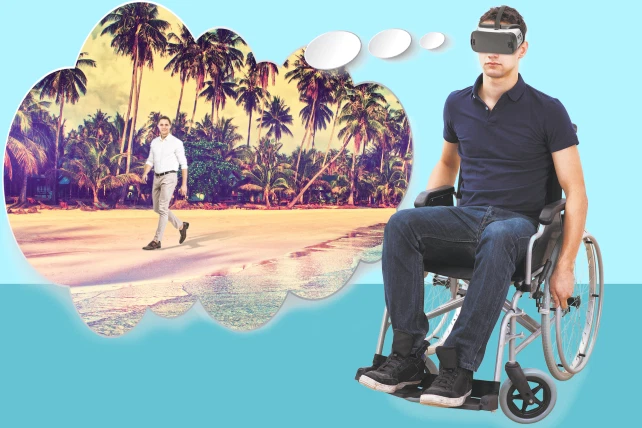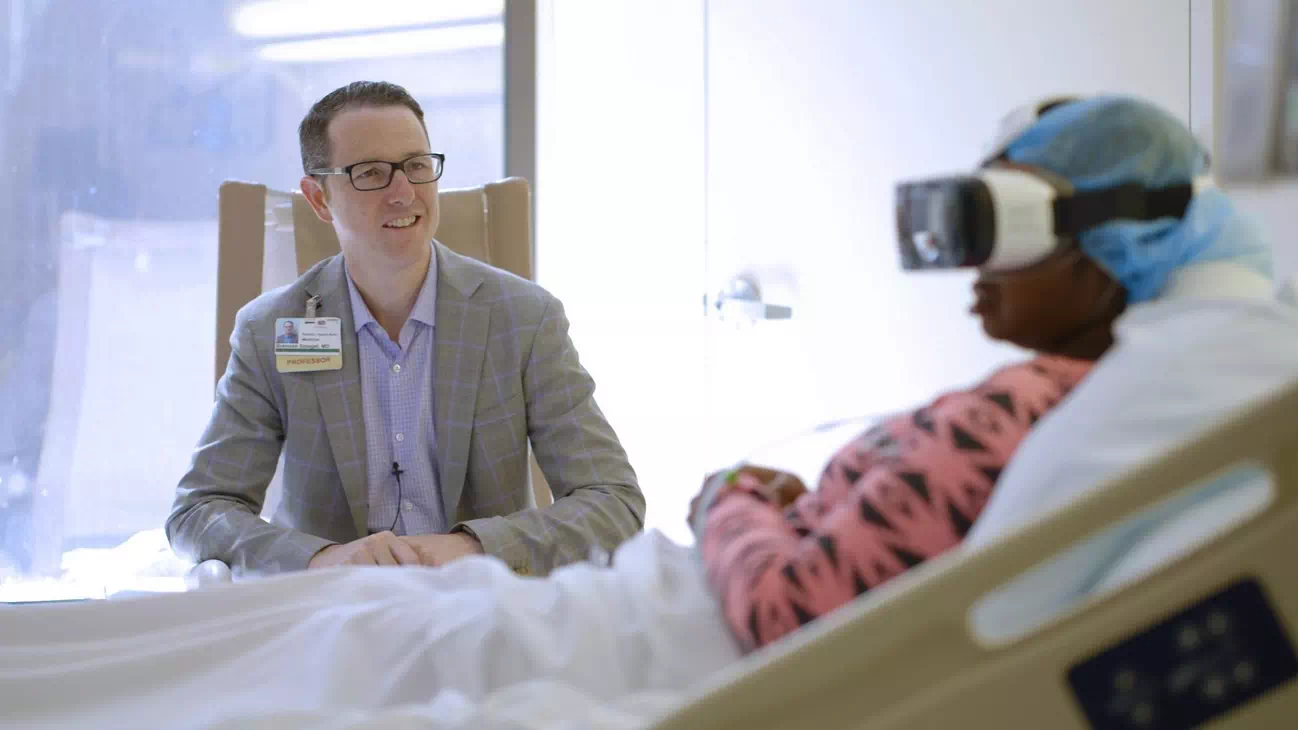

Erin Martucci declined an epidural when contractions started during the birth of her second child at Orange Regional Medical Center in Middletown, NY. When the pain became too intense, her gynecologist handed her a headset.
Minutes later, she was enraptured by a beach scene. The sun set as a flock of birds flew overhead. And a soothing woman’s voice instructed her to breathe.
Martucci had been so overtaken by the beauty of her virtual world that she lost track of the two hours of labor and didn’t even realize that the baby was coming. She delivered her child in less than two minutes.
This unusual treatment for pain management is just the beginning of a revolutionary new approach to medicine.
VR can "lower blood pressure, treat eating disorders, and combat anxiety. VR helps deliver babies and enables soldiers to cope with the mental scars of war", writes gastroenterologist Brennan Spiegel, director of one of the largest therapeutic virtual-reality programs in the world at LA’s Cedars-Sinai Medical Center, in his new book "VRx: How Virtual Therapeutics Will Revolutionize Medicine.
VR’s ability to manage pain has been widely researched. Studies suggest that virtual reality not only reduces the visceral pain but also seems to fast-track time, reducing the perceived length of the procedure by up to 46 percent.
VR is especially successful at treating pain because it can modify our negative perceptions.
One VR program called "Bravemind” treats soldiers with symptoms of PTSD. The goal is to deploy exposure therapy, which "gradually inoculates the brain against the triggers of PTSD,” writes Spiegel.
A similar mechanism is used to treat phobias, including fear of flying, fear of heights and fear of spiders.
By "inhabiting" the body of a healthy person through VR, patients with anorexia nervosa and morbid obesity have been shown to adopt better nutritional habits.
VR is also used to address and ease dementia by bringing people back in time, thus making the present less frustrating and confusing.
Some paralyzed patients have even recovered partial muscle control in their legs, bladder and bowel with the help of VR technology.